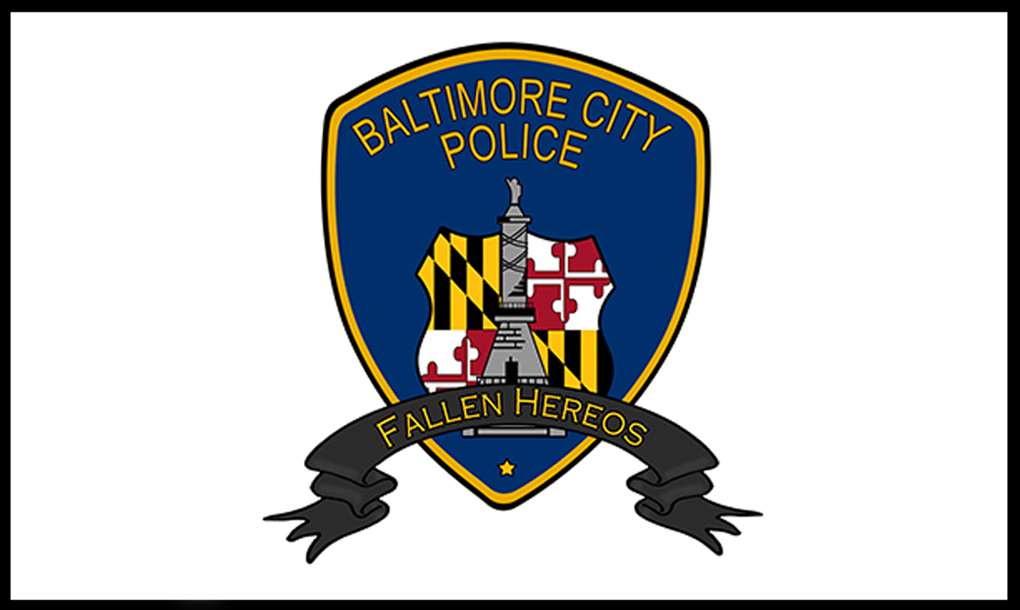On this day in Baltimore Police History, January 20, 1965, we lost our Brother Police officer, Charles R. Ernest, to a pedestrian-related auto accident based on the following:
At the intersection of Pearl and Saratoga St., Mr. Ferman Simmon and Mr. Louis Owen’s were involved in a minor traffic accident. Mr. Simmon was sitting in traffic when he was struck from behind. Mr. Owens had failed to stop for a stop sign (he was driving a 1959 Chevy) when he slammed into the rear of Mr. Simmon’s 1953 Ford. Even though their cars were operable, the two drivers failed to remove their cars from the street, causing a traffic backup.
It was approx. 11:15 a.m. on the morning of June 13, 1964. Patrolman Ernest and his partner, Officer Joseph Keirle, arrived to handle what, in terms of the Baltimore City Police Department’s calls, would be considered "routine.”. In more modern times, it would be a Sig 30. Patrolman Ernest examined the licenses and other paperwork that Mr. Simmons and Mr. Owens had provided while he and Mr. Simmons stood at the rear of the heavily damaged 53 Ford owned by Mr. Simmons, and the incident was being investigated. Mr. Owens was told to back his car away so Officer Keirle could better direct traffic around the scene and free up some of the traffic from the intersection. Mr. Owens jumped in behind the steering wheel, started the engine, and nervously put the car in gear. As most people are around Police, Owens was nervous, his anxiety as it was, He did not get the car into reverse but instead found drive, As he let up off the clutch while peering through the back window, his car lunged forward, He quickly went to push the brake, but again, his nerves got the best of him, and he pushed the pedal to the floor. Had it been the brake, he may have saved a life, but it was the gas, and instead of saving a life, he crushed the hips of two men between the cars.
Mr. Fermon Simmons and Officer Charles Ernest were powerless to stop the two vehicles from crushing them between the two, and in an instant, the pair were pinned between the cars. Mr. Owens immediately switched the car from 1st gear to reverse and backed his car away, but it was too late; the damage had already been done. When released from the massive trap of mangled steel and chrome, Patrolman Charles R. Ernest could do nothing but fall to the ground in horrific and unbearable pain.
The collision had shattered the hips, pelvis, and entire lower spine of both men. Patrolman Keirle immediately called for an ambulance and did his best to comfort his partner. The crew of Medic #1 (Ambulance #1) rushed to the scene and took the two men to University Hospital.
The hospital summoned Dr. John A. O’Conner, the official departmental doctor, to care for Officer Ernest. After a week in the hospital and several surgeries, Doctor O’Connor determined Officer Ernest would need long-term care and assigned Dr. Edward Wenzlaff as his primary doctor. When the immediate danger to his health had passed, Officer Ernest was taken from the hospital to his home with hopes of a full recovery.
At home, his wife, Dorothy, and daughter, Mary, were caring for him constantly; he seemed to be doing better. There was never a shortage of visitors. Unfortunately, things took a turn for the worse, and hopes would soon wane as there was a steady decline in his condition.
Though he had the benefits of the assigned physician caring for him, he did not progress the way Dr. O'Conner had originally hoped he would. On January 20, 1965, after multiple surgeries, numerous therapies, and 221 days of bed rest at his home, Officer Charles R. Ernest would suffer a severe heart attack and die, all as a result of the initial injuries.
Officer Charles R. Ernest served the department for 18 years and one month; he was a well-respected police officer. During World War II, he was a sergeant in the armory and faced the dangers of combat for little more than two years. In Baltimore, he spent almost half his life in the Western District, facing its dangers every day. In 1960, he was awarded the Silver Star after confronting an armed suspect and trading shots with him. A brave officer, he was never cavalier about dangerous situations; ironically, it was his keen sense of area awareness that kept him safe, a sense of awareness that was caught off guard by the usual routineness of a call like this. He could have never suspected that a call for a simple traffic accident would take his life. Which went on to teach future generations of police that there is no such thing as a routine call.
As his brothers and sisters of the Baltimore Police Department, we will not let him be forgotten, and we will take this time to remember him, think of him, and thank him for his service and sacrifice.
More details


 Officer Charles R. Ernest
Officer Charles R. Ernest



















